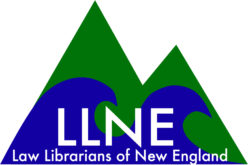By Brian Flaherty
Back in July I blogged about using social media as a tool to teach legal research – the post was a review of a “deep dive” program I went to at the AALL Annual Meeting. Going into the program I was incredibly skeptical. I was imagining spending a good deal of time “getting up to speed” with different media and platforms, only to be met with the same eye-roll from students that I get from my kids when I give them advice on especially nifty IPhone Apps. Nevertheless, I came away from the program with some ideas for using social media in teaching – or at least turning over some of the control to the students.
One of the ideas that came out of the program was incorporating Instagram in teaching research: have students take pictures of things they think are or should be regulated, and upload them for others to work with. In (or before) class, we could have students look for applicable laws and regulations – teasing out the differences between things that are dealt with in the statutes vs. things that are dealt with through administrative regulation. Also, given the number of research exercises we have our students do, I imagined this as an opportunity to have them create some of the research exercises rather than us.
I decided to try this idea – ironically, minus the traditional “social media” aspect. I had students take pictures and send them to me – and I used them to create a classroom presentation and exercises. But honestly, the idea of creating an Instagram site for our class, and having everyone log into it (or subscribe to it, or follow it, or whatever one does to Instagram) was daunting. I realized, though, that in terms of this being a “social media” exercise, I realized that we didn’t have to use one of the major platforms (Instagram) for it to be “social media.” Having them take pictures, send them to me, and then share them with the class was a social media based exercise.
The whole thing worked out as well as I could have imagined. I gave students two weeks to take and send pictures (I sent out the assignment the week before spring break). In addition, I told them to spend a bit of time – no more than a half hour – looking up whatever laws and regulations they could find on their subject. Send the photo and the regulating authority to me by email. I created a powerpoint of most of the photographs, which we cycled through in class, researching each thing in turn. It took a good deal of preparation on our part to know where we wanted to guide the discussion for each – but to be honest, this preparation was more enjoyable than struggling to come up with interesting topics to research.
We got a huge variety of photographs to work with – from pictures of homeless people (laws against vagrants, vagabonds and tramps, panhandling ordinances), to pictures of overflowing trash in Boston (Sanitary code, Boston City Ordinances), to a picture of a hot chocolate vending machine (Rhode Island: milk product dispensed from a vending machine). One person took a picture of his bedroom ceiling and wrote “why is there no light on my ceiling?” (Sanitary code: light and electric outlets in habitable rooms). In doing these exercises in class students had do some involved searching – they had to use statutory and regulatory schemes, they had to find city ordinances, and we had them track down enabling legislation.
We will absolutely do this kind of exercise again next year. Student were actively engaged, it got us working with unfamiliar topics, and we would up talking about why different things are governed by different types of authority, i.e. statutes vs. regulations vs. ordinances. From here, I’m going back to my AALL notes to figure out: what other cool things are my colleagues doing that I can adapt?

I love the idea of having students take pictures of regulated activity! Very cool.